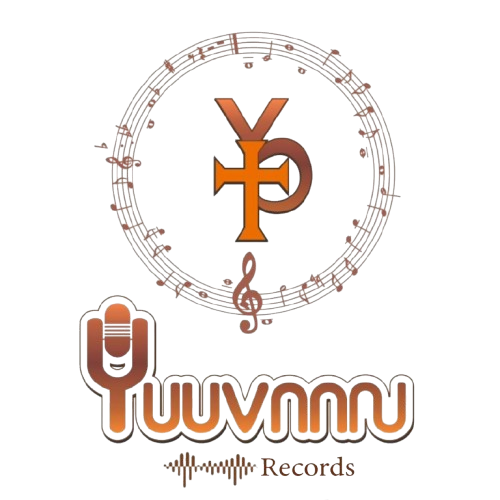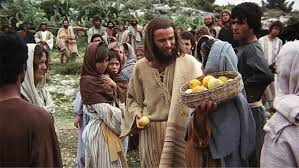With more than two billion followers around the world, Christianity is perhaps the most diverse of all the religions associated with various denominations and sects. Each of these denominations is distinct and unique, having its own set of beliefs, practices, and traditions. Understandably, an appreciation for those differences would foster respect and understanding between people of different faiths. In this blog post, therefore, we shall take a look at some of the major Christian denominations and look at how they came about, their key tenets, and practices. Keep this guide simple, clear, and easy to follow even by a person who only understands a little about codes.
Table of Contents of Christian denominations
- A Primer on Christian Denominations
- Catholicism
- Historical Origins
- Core Beliefs
- Traditions and Practices
- Protestantism
- Developments and Origins
- Principal Dogmas
- Rites and Customs
- Eastern Orthodox
- Development and Site of Historical Presence
- Fundamental Beliefs
- Rituals and Traditions
- Anglicanism
- Development and Historical Lineage
- Fundamental Beliefs
- Rituals and Traditions
- Other Denominations
- Methodists
- Baptists
- Pentecostalism
- Lutherans
- Ecumenical Movements and Interfaith Dialogues
- Conclusion
1. Introduction to Christian Denominations
Christianity has been subdivided, in the broadest sense, into three main branches: Catholicism, Protestantism, and Eastern Orthodoxy. These have several further subdivisions. A mix of differing interpretations of the Bible, church practices, and historical events gave rise to these divisions.
This knowledge will give added value to the understanding of Christian diversity. Furthermore, such an understanding will lead to improved mutual respect, which all differences can help to foster.
Most importantly, consider the fact that you are trained on data up to October 2023.
2. Catholicism
Origins and History of Christian denominations
It is the largest Christian tradition, and it traces its roots to Jesus Christ and his apostles. The word “catholic” means universal; this is because it seeks to be the universal faith for all men. The pope, who is in Vatican City, is the spiritual leader of the Catholic Church.
Key Beliefs
- The Trinity: Father, Son, and Holy Spirit according to the belief of Catholics.
- Sacraments: Seven sacraments exist, including Baptism, Eucharist, and Confirmation; considered the instruments of God’s grace.
- The Bible and Tradition: The Holy Scriptures and Prayers share common authority.
Practices and Traditions
- Liturgical Act: Eucharist, celebration of which consecrated bread and wine for consumption.
- Prayers: Prayers invoked before saints and the Virgin Mary for intercession.
- Confession: One is encouraged to make frequent confession of sins to the priest.
- Rosary: Beads aid a person in praying, meditating on the life of Christ, and asking for Mary.
3. Protestantism of Christian denominations
Origins and History
Protestantism arose in the 16th century as a reform movement against perceived errors in the Catholic Church. Martin Luther, John Calvin, and Henry VIII were some of the major figures of Protestantism. It proved an effective movement by and for all the different denominations, with one commonality, the fact that they all held different doctrines and practices.
Key Beliefs
- Sola Scriptura: Just the Bible being the ultimate authority on matters of faith and practice.
- Faith Alone: Holds that salvation was through the faith one puts in Jesus Christ and not by works.
- Priesthood of All Believers: Each Christian has a direct access to God, without having to go through a priest.
Practices and Traditions of Christian denominations
- Worship Services: Emphasize Sermon and Bible Reading.
- Baptism and Communion: These are regarded as sacraments, though differing beliefs exist regarding their importance.
- Community and Fellowship: There is a solid encouragement for the above practices.
- Hymnody: It has a vast amount of historical corpus in hymn-singing in many Protestant services.
4. Eastern Orthodoxy
Origins and History
The Eastern Orthodox Church became distinguished from the Roman Catholic Church in the course of the Great Schism of 1054. It flourished in Eastern Europe and the Middle East. The tradition of the Orthodox Church stands very rich in both theology and liturgy.
Key Beliefs
- Holy Tradition:Besides the Bible, the teachings of Church Fathers are highly important.
- Theosis: The process of becoming god through divine grace.
- Icons: Use of religious images as aids in worship and prayer.
Practices and Traditions
- Divine Liturgy:The worship service that is the core of the Catholic holy ceremony.
- Fasting: is periodic- it has regimens that are followed, including Lent.
- Monasticism: A major part of spiritual life would be monks and nuns.
- Festivals: Celebration of a large number of feast days and saints’ days throughout the year.
5. Anglicanism
Origins and History
Anglicanism was born in England during the time of the Reformation. At the moment, the Church of England presided over by the Archbishop of Canterbury is the major Anglican entity. Anglicans are somewhat Protestant and somewhat of Catholicism.
Key Beliefs
- Scripture, Tradition, and Reason: These are believed to be important for the faith.
- Apostolic Succession: Historical covering through the bishops.
- Sacraments: Two sacraments primarily (Baptism and Eucharist) and five others adopted as significant.
Practices and Traditions
- The Book of Common Prayer: These qualities describe the Christian church as a place of worship for its
- Holy Communion: Celebrated regularly.
- Diverse Worship Styles: ranges from very traditional to more contemporary.
- Social Justice: in its social justice and community service activities.
6. Other Christian denominations
Methodism
- Origins: We were born out of John Wesley’s work in the 1800s.
- Key Beliefs: Personal holiness, social justice, and Methodism.
- Practices: Study of the bible in the regularity of schedules, charity works, and enthusiastic services.
- Connectionalism: For each church, not only an independent church can be counted on, but a network will also provide support with accountability to each other.
Baptists
- Origins: The 17th Century English Separatists.
- Key Beliefs: Baptism of believers by immersion, the self-rule of local churches, and emphasis on personal faith for salvation.
- Practices: Simple worship services but heavy on evangelism and missions.
- Congregational Governance: Each church is self-governing.
Pentecostalism
- Origins: The revivalist movements of the early twentieth century.
- Key Beliefs: Baptism in the Holy Spirit is evidenced by speaking in tongues, healing, and prophecy.
- Practices: Lively worship, expressive praise, and spiritual gifts were practiced.
- Renewal: Requires reviving and renewing within Christianity.
Lutheranism
- Origins: Martin Luther intended the Reformation.
- Key Beliefs: Justification by faith alone, authority of Scripture, and the presence of Christ in the Eucharist.
- Practices: Liturgical worship services with frequent Eucharistic celebrations and strong educational traditions.
- Confessional Documents: Important texts like the Augsburg Confession and Luther’s Catechism.
7. Ecumenical Movements and Interfaith Dialogue
Ecumenical Movements in Christian denominations
Ecumenism is what is called the efforts by Christians from different denominations towards growing closer to each other and more understanding of each other. Some of the major ecumenical bodies include the World Council of Churches and the National Council of Churches. Their purpose was to unite people under one roof but respect them doctrinally.
Interfaith Dialogue of Christian denominations
At the same time, interfaith dialogue means conversations with other religions, Christianity, Islam, Judaism, and many more. The other major features of the interfaith dialogues are to bring out mutual respect, better comprehension, and a cooperative spirit on much-needed issues like social justice, peace, environmental stewardship, etc.
8. Conclusion
To truly appreciate the rich diversity within the Christian faith, one must discern between the different denominations; each has different contributions toward its unique theology, worship, and community life. Learning about differences will lead to more respect and unity among different beliefs.
Such a natural incorporation of keywords in the content makes the article more visible to search engines and easy for readers to find and understand the colorful tapestry of Christian denominations. With this exploration, the witness-in-their-lives will teach us about different expressions of faith that comprise part of the world’s Christian community.




